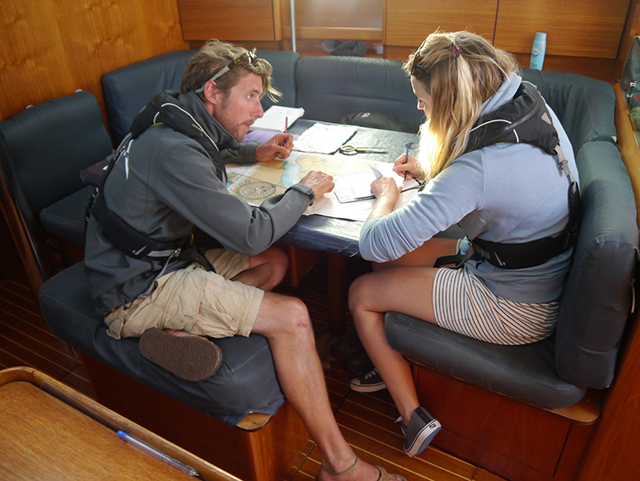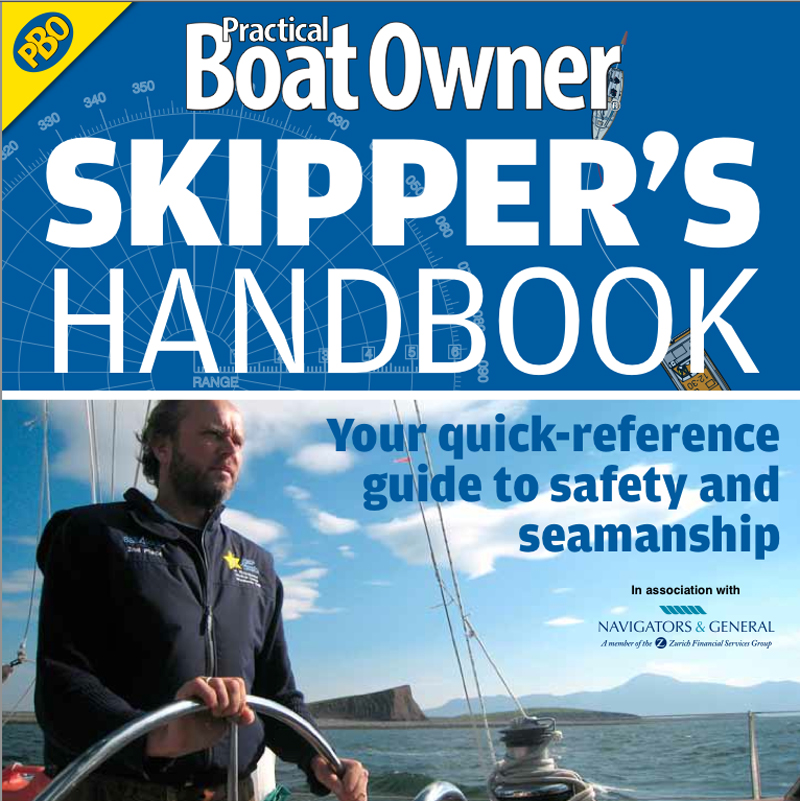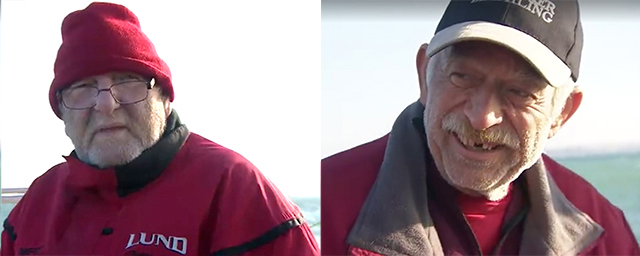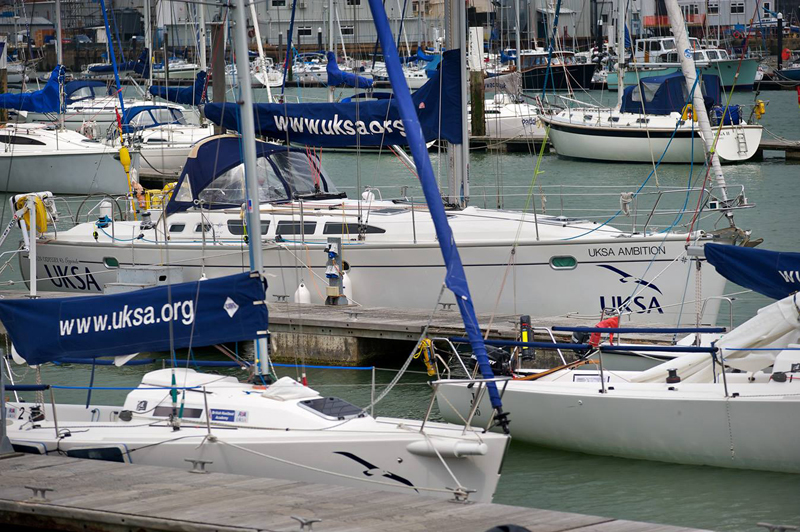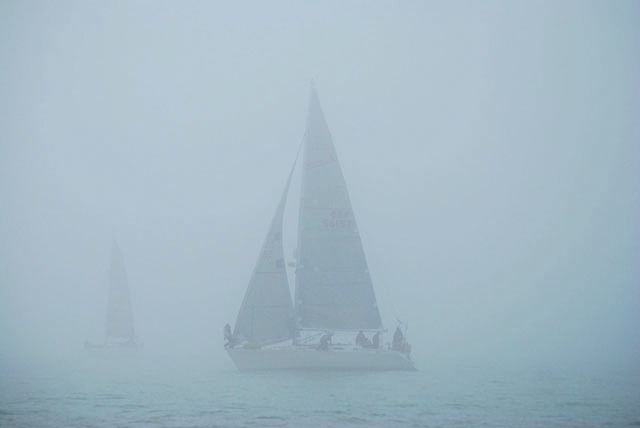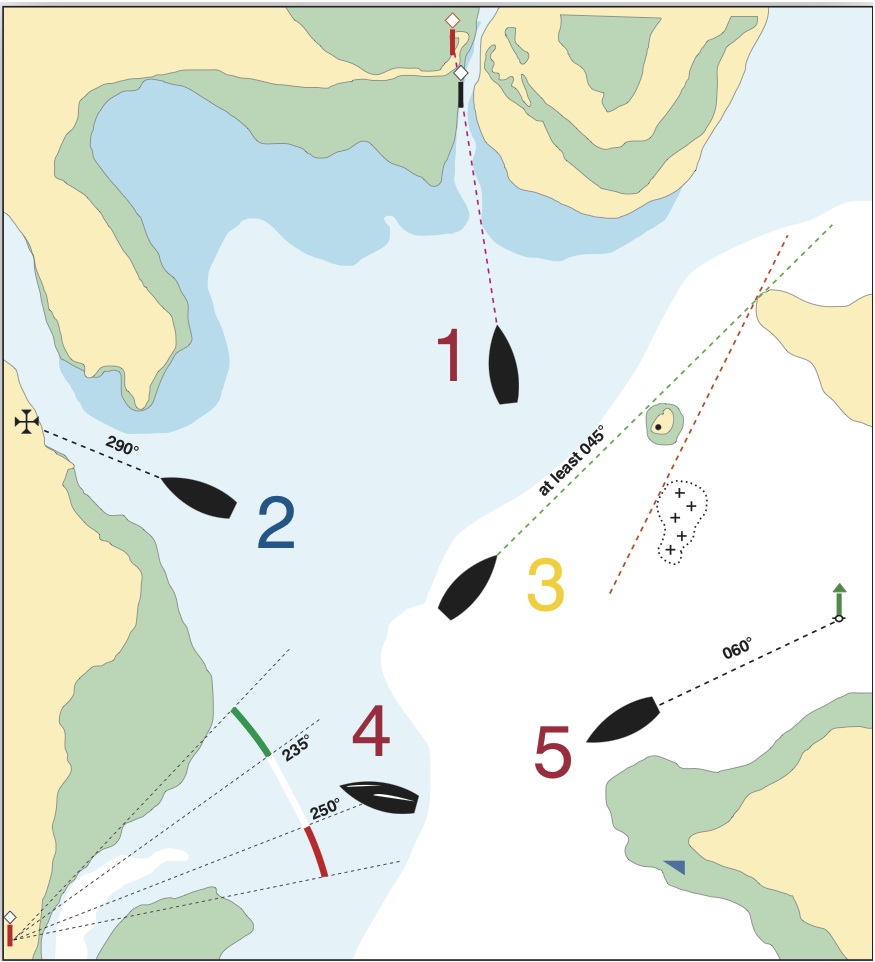A Day Skipper Practical course gives PBO news editor Laura Hodgetts first-hand insights into man overboard recovery, mooring alongside under power, passage planning and much more
What would you do if the most experienced sailor on your boat fell overboard? Could you safely bring your yacht alongside another cruiser or pontoon? How would you plan a passage?
Having always sailed with much more experienced sailors, it was daunting to look around at my equally nervous course-mates at the start of the RYA Day Skipper Practical and think: ‘Wow, it’s up to us now.’
I’d practised MOB recovery as part of my PowerboatLevel 2 course, but never on a yacht. Similarly, coming alongside in a rigid inflatable boat suddenly seemed like a bumper-clad dream compared to mooring up in a 13.7m (45ft) yacht surrounded by even more expensive cruisers.
‘This could go horribly wrong,’ I thought: but it didn’t. Having an unflappable instructor at my side was invaluable, even when he was keeping shtum about how he would have carried out the manoeuvre.

Learning to trust and get the best out of your crew was another important aspect of the course, as we all took turns to skipper the yacht.
I did feel sorry for the instructor, Josh Stickland, when I arrived at UKSA on the Isle of Wight and promptly forgot all the sailing terminology I’d ever known.
But he seemed undaunted, and by the end of the week we were all unrecognisably shipshape!
The Day Skipper Practical course is designed to teach you to take command of a yacht up to 13.7m (45ft) LOA by day in familiar waters safely and confidently. In addition to navigation, a skipper is responsible for the safety and well-being of the yacht and crew.
These responsibilities include weather forecasting, victualling, engine maintenance, sail selection and handling, passage planning, watch-keeping, navigation and pilotage.
I was among three aspiring female Day Skippers, while two men were undertaking their Competent Crew qualifications.
All had differing reasons: Emily wanted to gain confidence for sailing with her family; Judith aims to set up a Mediterranean charter boat business with her experienced sailor husband; Martin wanted to make use of his brother’s Greek charter boat business, while James wanted more experience ahead of a family sailing holiday.

Laura and the crew of UKSA Ambition flake the sail
Getting acquainted
First up, we went over our sailing knowledge (or sudden lack of it) and got acquainted with the Jeanneau Sun Odyssey 43 UKSA Ambition which was to be our home for the next five days.
Everyone had their own cabin apart from Emily and I, who shared one, and Josh who volunteered to sleep in the galley.
We carried out a thorough stock check of all the items on board, replacing any missing or broken items and stocking up on food and water.
Once all was in order, Josh took the helm and we motored up the River Medina, hoisted the mainsail with two reefs and sailed around the western Solent.
En route to Yarmouth Harbour we were called up by Lymington’s RNLI lifeboat crew, who wanted to test out their new tow-bar: I was at the helm while the lifeboat crew slickly towed us for a while and then carried on their way.
UKSA provided all the food on board including sandwiches, fruit, crisps and chocolate. Judith made herself immediately popular by bringing home-made cakes.
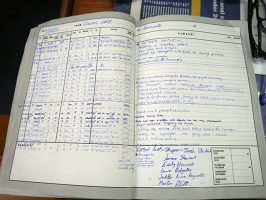
The logbook
Making dinner was a breeze as we had pre-prepared homecooked meals from UKSA that just needed heating up, alongside pasta, rice or potatoes.
We took it in turns to ‘be skipper’ and also to complete an hourly logbook entry including the time, our co-ordinates, course ordered, course steered, the weather, sea state and any remarks. Learning to use the barometer was interesting: if it drops three millibars in three hours bad weather is probable, if it drops five millibars in three hours, get reefing and into port.
For our five days we enjoyed fair winds and a slight sea state with the barometer never changing more than one millibar within three hours.

The bigger picture
Both Emily and I found that although we had previous sailing experience of doing specific jobs while crewing, the Day Skipper course enabled us to see the bigger picture.
When sailing with more confident sailors it’s rare to be trusted at the helm at crucial times such as mooring alongside or in a MOB scenario, so the Day Skipper was the ideal opportunity to go ‘pontoon bashing’ and rescue training.
Emily Hiscock, aged 19, said: ‘It seemed like we’d only been on there a few minutes before Josh asked if I wanted to take the helm.
‘It’s the best way: I have to be thrown into it or I won’t get there.
‘When I did the theory side of the course the charts seemed really complicated, but when passage planning it made much more sense putting it into practice. I’d definitely be more confident now when sailing with my family.’

Yarmouth’s Gribble
I volunteered to do the pilotage plan to take us out of Yarmouth on the first morning, which involved being up and showered ready for the 7.30am coastguard weather report on VHF Ch68, checking the tides in the Reeds Almanac, sketching out the route out of Yarmouth Harbour and highlighting any potential hazards – such as the ferry.
We spat into the water to double-check the tidal flow! My crew assembled two spring lines, and at Josh’s advice I got someone to man the helm while I checked their work – only to find that one of the spring lines was running inside the boat and needed redoing outside the rails. A lesson to double-check everything with an inexperienced crew.
We left the mooring without any incident. I reversed back, assisted by the wind, tide, our spring lines and Judith with a roaming fender.
Motoring in reverse through the busy marina took me out of my comfort zone, but Josh took all my nervous questions in his stride and it was a good confidence-builder.
Yarmouth Harbour staff kindly gave us the go-ahead to practise mooring alongside an empty pontoon, so rather than leaving as planned, we took it in turns to take charge mooring up, springing off and reversing away.
In the afternoon, we left Yarmouth Harbour heading to Newtown River and began man overboard training – an invaluable skill for all boaters.

Martin celebrates a successful ‘MOB’ recovery
Taking it in turns as skipper, at the MOB shout we directed one crew member to keep pointing at the casualty (a fender with lines attached for weight), told another to make a (pretend) Mayday call via VHF radio, and got a crew member to throw the ‘toys’ – lifesaving equipment – towards the casualty.
Crew were also directed to check for lines in the water, get the jib down and pull in the mainsheet as the skipper put the engine on and turned the yacht into wind.
A crew member was instructed to fetch the boathook and get on the side of the boat facing the casualty as we drifted downwind: the skipper would use the engine to stay in line with the MOB while the crew shouted out distances as we edged closer, ready for the engine to be turned off and the rescue completed.
On occasion when the rescue failed (be it the fault of the skipper or the crew with the boathook’s co-ordination!), it was a case of engine back on, motor upwind and another attempt to drift gently onto the MOB.
Josh reassured us that in the Solent a casualty could expect to survive cold-water immersion for three hours before suffering hypothermia.
Topics covered

Laura receives chart work instruction
Other topics we covered included reefing practice (Josh advised: ‘If you think you need a reef, you should’ve done it five minutes ago; if you think you need to take a reef out, have a cup of tea’); steering and trimming sails effectively on all points of sail; engine checks; deck work including keeping lines tidy; how much chain or warp to use when anchoring; coming to and slipping from a buoy; taking and plotting visual fixes; using electronic navigation equipment for position fixing; using waypoints; estimating tidal heights and tidal streams; working out course to steer allowing for tidal drift, set and leeway; preparing and executing a pilotage plan for entry into or departure from harbour; meteorology; other sources of forecast information such as helpful marinas and websites; using a barometer as a forecasting aid; rules of the road; the International Regulations for Preventing Collisions at Sea, ie rights of way; the properties and uses of common synthetic fibre ropes; how to change fuel and water filters and a pump impeller; how to bleed the fuel system; victualling, ie stocking the boat with enough food and drink for the voyage; distress flares and how to use a liferaft; how to secure a tow; yacht handling under sail and much more.
Josh drilled us in reef knots, round turn and two half-hitches, and barrel knots, using his newly-learned technique of making a large loop and then proceeding to twist one of the lines four times around the other before pulling tight.

James studying with the nautical flash cards
We also studied flashcards to memorise aids to navigation such as markers, buoys, their differing lights, and flags.
Whenever we saw a vacant pontoon we would practise ‘parking’, with Josh encouraging us to get speed up before turning sharply away when the crew member shouted that we were at 1m, ready to pull neatly alongside.
It got a bit scary jumping ashore with the mooring lines when one crew member powered into the pontoon so fast that they burst a fender.
I learned the importance of taking your time, having a sail-past to assess the mooring and get the crew ready, after one time when I was at the helm, approaching a very tight pontoon space at UKSA. I overestimated the speed my crew could get the fenders in place and then was too cautious in my approach, pulling up half a metre short of the pontoon. Luckily a UKSA staff member was ashore, ready to catch the lines and pull the yacht closer.
The benefit of the Day Skipper course is that you get to make these mistakes in the company of other people who are also learning and with a reassuring instructor at your side. On the last night of the course we stayed out until midnight to ensure we could gain experience of spotting and identifying navigational aids at night – harder than expected!
Exceeded expectations
I’d anticipated the course being full-on during the day, but with the evenings off. I took my laptop, planning to catch up on work, but it didn’t even make it out of the bag. Expect long days and a lot of information to take in. For me it filled a lot of the knowledge gaps: instead of trusting blindly, I’m now aware of the bigger picture, and it’s liberating. Having researched and written about the Portland Course Plotter for PBO’s Classic Kit, it was really interesting to use one.
Even learning to jump off amidships for a bow or stern line was a revelation, having always thought the crew who did that had to nimbly jump the greater distance from the actual bow or stern. Learning how spring lines work was another revelation, after seeing them in use many times but never having had to do them myself.

When we got back to UKSA, as we cleaned and tidied the boat ready for its next occupants, we were called one by one to the bar area where Josh was waiting with his assessments. It was like walking to the headmaster’s office.
Just paying for the course is not a dead cert that you will pass: both my fellow aspiring Day Skippers were signed off as Competent Crew and passed areas of their Day Skipper Practical, with other aspects still to work on before completion of the qualification.

Martin Elliott
James and Martin both gained their Competent Crew certificates.
Martin Elliott, aged 55, said: ‘Josh has been really good about showing us what to do. I feel much more confident around the boat now. Before I knew bits of it, but when you do the course you end up having a knowledge of the whole thing.’
It was a relief to hear that I had passed, having answered all Josh’s questions about navigational aids, tied the knots requested and shown sufficient skills and knowledge of the core topics – preparation for sea; deck work; navigation; pilotage; meteorology; rules of the road; maintenance and repair work; engines; victualling; emergency situations; handling under power (sail and motor); yacht handling under sail; passage making; night cruising; and the tidal additions of navigation, handling under power and sail.
I was surprised when Josh said I ‘dominated the week’, and can only hope this was a positive comment! It’s exhilarating to think that completing this qualification could open doors to charter boat holidays in lovely warm places.
The joke around the office is that in amongst far more experienced yachtsmen, I’m nearly PBO’s most qualified sailor. Once the shore-based theory course is complete I’ll be a fully-fledged Day Skipper – watch this space.
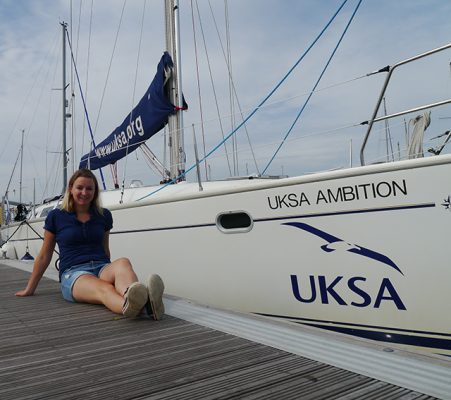
Day Skipper in a nutshell
The Royal Yachting Association (RYA) Day Skipper course can be used to obtain an International Certificate of Competence and satisfies the minimum experience requirement for bareboat charter.
The practical course involves five days aboard a yacht, 100 miles sailed and four night hours. It’s an introduction to navigation, boat handling and skippering skills, leading to the ability to skipper a small yacht on short daylight passages in fair weather.
The course concentrates on pilotage, navigation and boat handling under both sail and power. It will also improve your sail setting and deck work, as well as developing your knowledge and understanding of seamanship and safety issues.
During the course you will be able to take charge of the yacht on short tidal passages, under the guidance of the instructor. At the time of going to press, the five-day RYA Day Skipper Practical Certification cost £540 through UKSA, which included all food and accommodation on board.
It can also be completed over three weekends. This course can be combined with the RYA Day Skipper shorebased course over 10 days. Remember your sleeping bag, pillow and passport photo!
Find out more at www.uksa.org.
This article was published in the September 2015 issue of PBO. Browse the online copy service to browse for more archived articles.
Important change to Day Skipper Certificate
From next year, the distinction between Tidal and Non-Tidal RYA Day Skipper Practical courses will end.
Pilotage: 14 ways to get a fix
14 traditional pilotage tips to help you obtain and maintain a fix of your position
Nav in a nutshell: Electronic charts
Dick Everitt assesses the differences between raster and vector charts when deciding on which chart plotter to buy
PBO Skipper’s Handbook
Your quick reference guide to safety and seamanship, still available in digital format
Nav in a nutshell: Coping with currents
Dick Everitt explains how sailors can apply knowledge of tidal streams to ensure that water flow is a help, not…
‘Nine’ lifeboat rescues is ‘grossly exaggerated’ says Nora skipper
American yachtsman Steve Shapiro defends his haphazard voyage, while others call for him to be stopped.
UKSA chosen as Cowes Week Charity of the year
For the next two years, any funds raised during the Cowes Week regatta will go towards youth development initiatives on…
Nav in a nutshell: Shaping a course
GPS is not infallible, so it makes sense to know the basics of shaping a rough ‘course to steer’ on…
Nav in a nutshell: Looks good on paper
Up-to-date printed paper charts are a good bet for identifying your position – but they do have their limits, says…
Nav in a Nutshell: Navigate by ‘feel’ using an echo sounder
The ‘ping’ is king: You can navigate by ‘feel’ over the seabed in adverse conditions by using an echo sounder…
5 Hand-bearing pilotage tips
An aide-memoire to using a handbearing compass, transits and bearings for quick and easy coastal pilotage





